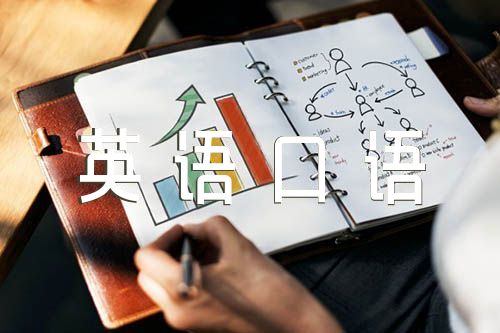大学英语四、六级考试口语考试大纲
一、评分标准
CET-SET 主考在评分时使用以下标准: a. 准确性 指考生的语音、语调以及所使用的语法和词汇的准确程度 b. 语言范围 指考生使用的词汇和语法结构的复杂程度和范围 c. 话语的长短 指考生对整个考试中的交际所作的贡献、讲话的多少 d. 连贯性 指考生有能力进行较长时间的、语言连贯的发言 e. 灵活性 指考生应付不同情景和话题的能力 f. 适切性 指考生根据不同场合选用适当确切的语言的能力
二、语言功能
CET-SET 考试要求考生参与不同形式的口头交际,其语言能力将根据其在考试中的表现予以测量。考生需要掌握的语言功能和意念在《大学英语教学大纲》中已明确列出。以下仅列举其中部分的语言功能和意念。
友好往来 问候,介绍,告别和告辞,祝愿和祝贺,感谢和应答,道歉和应答,提议、邀请和应答。
相互交流 开始交谈,继续交谈,改变话题,停止交谈。
态度 愿意,希望,意向,决心,责任,能力,允许,禁止,同意和不同意, 否定,喜欢和不喜欢,偏爱,责怪和抱怨,判断、决定和意见。
劝说命令,劝告和建议,承诺,提醒。
感情 焦虑,惊奇,兴趣,加重感情色彩。
存在 存在和不存在,有和没有。
空间描述 位置,方向,运动,距离。
时间 时刻,时段,时间关系,频度,时序。
发表意见和看法 询问意见和看法,发表意见和看法,对意见和看法的反应,同意,不同意,要求澄清,澄清意见和看法。
争辩 讨论,讨论观点,反驳论点,提出进一步论证,劝说和对劝说的反应。
三、考试形式
CET-SET 考试分三部分: 第一部分是考生和 CET 授权的主考进行交谈,采用问答的形式。时间约 5 分钟。 第二部分包括 1.5 分钟的考生个人发言和 4.5 分钟的小组讨论。时间共约 10 分钟。 第三部分由主考再次提问以进一步确定考生的口头交际能力。时间约 5 分钟。
四、输入信息
CET-SET 考试运用以下两种形式的输入信息来产生信息差: 1 )画面提示(如图片、图表、照片等); 2 )文字提示。
Part 1 (5 minutes)
Examiner:
Part 2 (10 minutes)
Examiner:
Part 3 (5 minutes)
Examiner:
体例说明:
word/media/image1.png
46.Vision
Human vision like that of other primates has evolved in an arboreal environment. In the dense complex world of a tropical forest, it is more important to see well that to develop an acute sense of smell. In the course of evolution members of the primate line have acquired large eyes while the snout has shrunk to give the eye an unimpeded view. Of mammals only humans and some primates enjoy color vision. The red flag is black to the bull. Horses live in a monochrome world .light visible to human eyes however occupies only a very narrow band in the whole electromagnetic spectrum. Ultraviolet rays are invisible to humans though ants and honeybees are sensitive to them. Humans though ants and honeybees are sensitive to them. Humans have no direct perception of infrared rays unlike the rattlesnake which has receptors tuned into wavelengths longer than 0.7 micron. The world would look eerily different if human eyes were sensitive to infrared radiation. Then instead of the darkness of night, we would be able to move easily in a strange shadowless world where objects glowed with varying degrees of intensity. But human eyes excel in other ways. They are in fact remarkably discerning in color gradation. The color sensitivity of normal human vision is rarely surpassed even by sophisticated technical devices.
47 Folk Cultures
A folk culture is a small isolated, cohesive, conservative, nearly self-sufficient group that is homogeneous in custom and race with a strong family or clan structure and highly developed rituals. Order is maintained through sanctions based in the religion or family and interpersonal. Relationships are strong. Tradition is paramount, and change comes infrequently and slowly. There is relatively little division of labor into specialized duties. Rather, each person is expected to perform a great variety of tasks, though duties may differ between the sexes. Most goods are handmade and subsistence economy prevails. Individualism is weakly developed in folk cultures as are social classes. Unaltered folk cultures no longer exist in industrialized countries such as the United States and Canada. Perhaps the nearest modern equivalent in Anglo America is the Amish, a German American farming sect that largely renounces the products and labor saving devices of the industrial age. In Amish areas, horse drawn buggies still serve as a local transportation device and the faithful are not permitted to own automobiles. The Amish’s central religious concept of Demut “humility”, clearly reflects the weakness of individualism and social class so typical of folk cultures and there is a corresponding strength of Amish group identity. Rarely do the Amish marry outside their sect. The religion, a variety of the Mennonite faith, provides the principal mechanism for maintaining order.
By contrast a popular culture is a large heterogeneous group often highly individualistic and a pronounced many specialized professions. Secular institutions of control such as the police and army take the place of religion and family in maintaining order, and a money-based economy prevails. Because of these contrasts, “popular” may be viewed as clearly different from “folk”. The popular is replacing the folk in industrialized countries and in many developing nations. Folk-made objects give way to their popular equivalent, usually because the popular item is more quickly or cheaply produced, is easier or time saving to use or leads more prestige to the owner.
48 Bacteria
Bacteria are extremely small living things. While we measure our own sizes in inches or centimeters, bacterial size is measured in microns. One micron is a thousandth of a millimeter: a pinhead is about a millimeter across. Rod-shaped bacteria are usually from two to four microns long, while rounded ones are generally one micron in diameter. Thus if you enlarged a rounded bacterium a thousand times, it would be just about the size of a pinhead. An adult human magnified by the same amount would be over a mile(1.6 kilometer) tall.
Even with an ordinary microscope, you must look closely to see bacteria. Using a magnification of 100 times, one finds that bacteria are barely visible as tiny rods or dots. One cannot make out anything of their structure. Using special stains, one can see that some bacteria have attached to them wavy-looking “hairs” called flagella. Others have only one flagellum. The flagella rotate, pushing the bacteria through the water. Many bacteria lack flagella and cannot move about by their own power, while others can glide along over surfaces by some little-understood mechanism.
From the bacteria point of view, the world is a very different place from what it is to humans. To a bacterium water is as thick as molasses is to us. Bacteria are so small that they are influenced by the movements of the chemical molecules around them. Bacteria under the microscope, even those with no flagella, often bounce about in the water. This is because they collide with the watery molecules and are pushed this way and that. Molecules move so rapidly that within a tenth of a second the molecules around a bacteria have all been replaced by new ones; even bacteria without flagella are thus constantly exposed to a changing environment.
49 Sleep
Sleet is part of a person’s daily activity cycle. There are several different stages of sleep, and they too occur in cycles. If you are an average sleeper, your sleep cycle is as follows. When you fist drift off into slumber, your eyes will roll about a bit, you temperature will drop slightly, your muscles will relax, and your breathing well slow and become quite regular. Your brain waves slow and become quite regular. Your brain waves slow down a bit too, with the alpha rhythm of rather fast waves 1 sleep. For the next half hour or so, as you relax more and more, you will drift down through stage 2 and stage 3 sleep. The lower your stage of sleep. slower your brain waves will be. Then about 40to 69 minutes after you lose consciousness you will have reached the deepest sleep of all. Your brain will show the large slow waves that are known as the delta rhythm. This is stage 4 sleep.
You do not remain at this deep fourth stage all night long, but instead about 80 minutes after you fall into slumber, your brain activity level will increase again slightly. The delta rhythm will disappear, to be replaced by the activity pattern of brain waves. Your eyes will begin to dart around under your closed eyelids as if you were looking at something occurring in front of you. This period of rapid eye movement lasts for some 8 to 15 minutes and is called REM sleep. It is during REM sleep period, your body will soon relax again, your breathing will slip gently back from stage 1 to stage 4 sleep----only to rise once again to the surface of near consciousness some 80 minutes later.
50. Cells and Temperature
Cells cannot remain alive outside certain limits of temperature and much narrower limits mark the boundaries of effective functioning. Enzyme systems of mammals and birds are most efficient only within a narrow range around 37C;a departure of a few degrees from this value seriously impairs their functioning. Even though cells can survive wider fluctuations the integrated actions of bodily systems are impaired. Other animals have a wider tolerance for changes of bodily temperature.
For centuries it has been recognized that mammals and birds differ from other animals in the way they regulate body temperature. Ways of characterizing the difference have become more accurate and meaningful over time, but popular terminology still reflects the old division into “warm-blooded” and “cold-blooded” species; warm-blooded included mammals and birds whereas all other creatures were considered cold-blooded. As more species were studied, it became evident that this classification was inadequate. A fence lizard or a desert iguana—each cold-blooded----usually has a body temperature only a degree or two below that of humans and so is not cold. Therefore the next distinction was made between animals that maintain a constant body temperature, called home0therms, and those whose body temperature varies with their environments, called poikilotherms. But this classification also proved inadequate, because among mammals there are many that vary their body temperatures during hibernation. Furthermore, many invertebrates that live in the depths of the ocean never experience change in the depths of the ocean never experience change in the chill of the deep water, and their body temperatures remain constant.
http://m.jianqiaoenglish.com/79882.html
推荐访问:如何练习英语口语 英语口语练习软件










